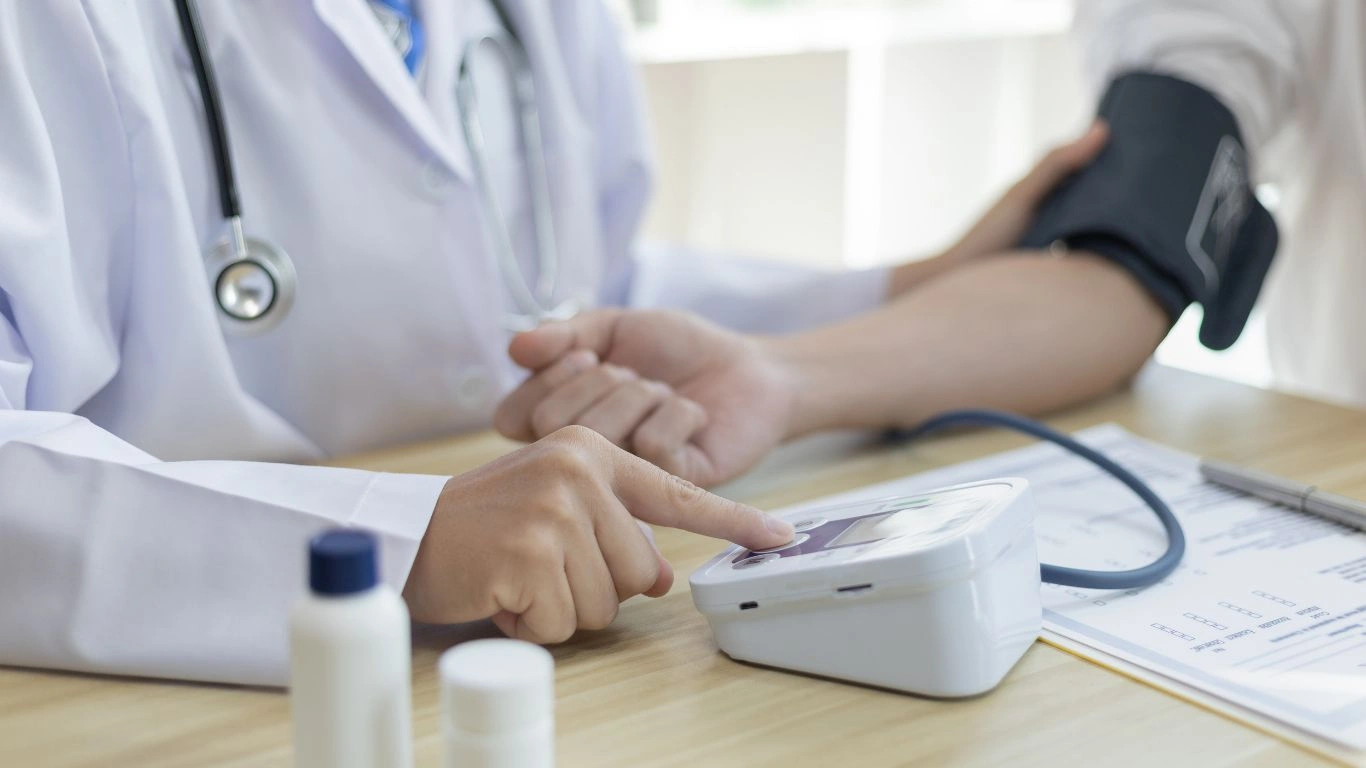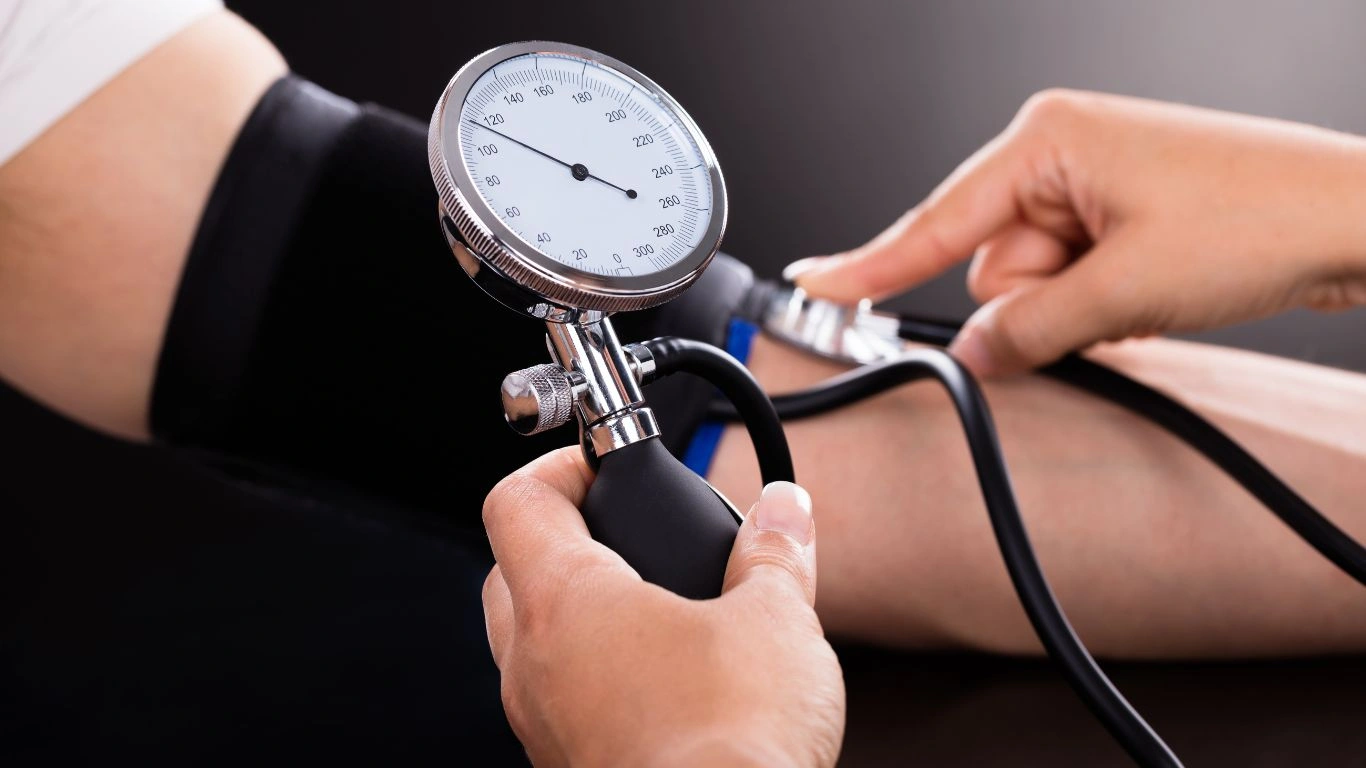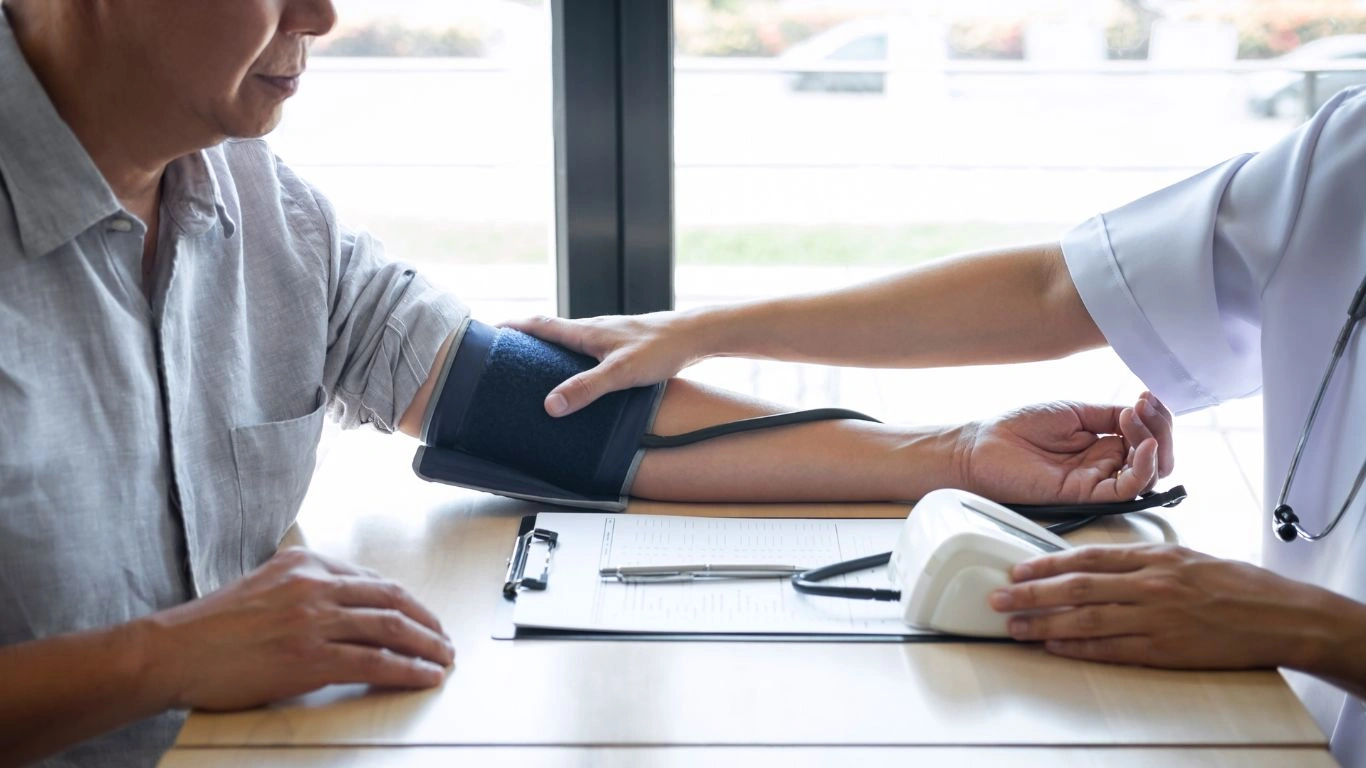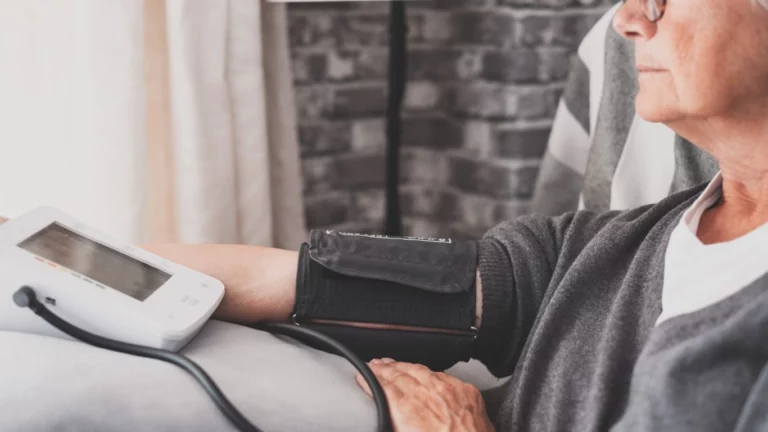Best Low-Carb Diets for Blood Pressure Control: Proven Benefits for Heart Health
When it comes to managing high blood pressure, many people don’t realize that something as simple as diet can have a huge impact. One diet that’s been gaining popularity for its ability to support heart health and help regulate blood pressure is a low-carb diet. But what exactly are the best low-carb diets for blood pressure control, and how can you use them effectively to reduce hypertension risks? Let’s dive into this, based on my own experience as a hypertension expert and the numerous clients I’ve worked with over the years.
Understanding the Connection Between Low-Carb Diets and Blood Pressure

For anyone dealing with hypertension (high blood pressure), finding a way to control it can feel like an uphill battle. But diet is one area where significant changes can be made to improve overall health and reduce blood pressure. One of the most effective approaches? A low-carb diet. As someone who has seen countless patients over the years, I’ve observed the benefits of a low-carb approach firsthand. But what makes low-carb eating so beneficial for blood pressure control?
First, it’s important to understand how carbs affect the body. When we consume a lot of carbohydrates, especially refined ones like those found in sugary snacks, pasta, and bread, our blood sugar levels spike. This triggers the release of insulin, a hormone that can lead to fluid retention and an increase in blood pressure. By reducing carbs, we can help our bodies manage insulin levels better, which can directly impact blood pressure levels.
How Low-Carb Diets Affect Blood Pressure
Low-carb diets have been shown to have several effects on blood pressure. First, by cutting down on carbs, you’re naturally reducing the amount of insulin your body produces. This has been linked to lower sodium retention, which can be a major contributor to high blood pressure. Another factor is weight loss—many people see significant weight loss results when they switch to a low-carb lifestyle. Since excess weight can put strain on the heart, reducing it can naturally lead to better blood pressure control.
Additionally, low-carb diets often involve eating whole, nutrient-dense foods like vegetables, lean proteins, and healthy fats, all of which can support heart health. These foods are rich in potassium, magnesium, and other vital nutrients that help balance blood pressure. So, it’s not just about cutting carbs—it’s about replacing them with foods that promote optimal heart function.
Best Low-Carb Diets for Blood Pressure Control

Now that we’ve established why low-carb diets can help manage high blood pressure, let’s dive into some of the best low-carb diets that you can incorporate into your daily routine. Whether you’re new to the world of low-carb eating or looking for ways to enhance your blood pressure control efforts, here are a few diet plans that could help.
1. The Ketogenic Diet
The ketogenic diet, or keto for short, is one of the most popular low-carb diets out there. It focuses on drastically reducing carb intake (usually to about 20-50 grams per day) and replacing those carbs with healthy fats. This puts your body into a state of ketosis, where it burns fat for energy instead of carbs.
How does this help with blood pressure? Ketosis can lead to weight loss, which has a direct impact on blood pressure. Furthermore, the high-fat, low-carb nature of the diet can improve insulin sensitivity, reduce inflammation, and lower sodium retention—all of which are key factors in controlling blood pressure.
If you decide to try the keto diet, focus on healthy fats like avocado, olive oil, and nuts, while minimizing processed and unhealthy fats. Combine this with plenty of non-starchy vegetables for fiber, and you’ve got yourself a heart-healthy, blood pressure-friendly diet.
2. The Mediterranean Diet
The Mediterranean diet isn’t strictly low-carb, but it can be adapted to suit a low-carb lifestyle. This diet is centered around whole foods, healthy fats (like olive oil), lean proteins (especially fish), and plenty of vegetables. The Mediterranean diet is known for its cardiovascular benefits, and research has shown that it can reduce the risk of hypertension and stroke.
For blood pressure control, you can modify the Mediterranean diet by limiting your intake of refined carbs (like white bread and pasta) and focusing on whole, fiber-rich carbohydrates like leafy greens, nuts, and seeds. These foods can help manage weight and improve insulin sensitivity, both of which are crucial for keeping blood pressure in check.
3. The Paleo Diet
The paleo diet encourages eating whole, unprocessed foods that our ancestors might have consumed. This includes lean meats, fish, fruits, vegetables, nuts, and seeds. By avoiding processed foods, grains, and legumes, the paleo diet naturally limits carb intake, making it another solid choice for blood pressure control.
The benefits of the paleo diet include better weight management, reduced inflammation, and improved heart health—all of which can contribute to more balanced blood pressure levels. Additionally, by focusing on nutrient-dense foods, you’ll be providing your body with the potassium, magnesium, and other key nutrients that support heart function.
Tips for Getting Started with a Low-Carb Diet for Blood Pressure Control

So, now that we’ve explored some of the best low-carb diets for blood pressure control, you might be wondering how to get started. It doesn’t have to be overwhelming! Here are some simple tips to ease into a low-carb lifestyle:
- Start slow: If you’re used to a high-carb diet, make gradual changes to avoid feeling overwhelmed. Start by cutting back on processed carbs like cookies, cakes, and white bread.
- Focus on whole foods: Opt for whole, unprocessed foods like vegetables, lean proteins, and healthy fats. These are packed with nutrients that support heart health.
- Stay hydrated: Drinking plenty of water is essential, especially when starting a low-carb diet. Proper hydration helps regulate blood pressure and supports overall health.
- Monitor your progress: Keep track of your blood pressure, weight, and how you’re feeling throughout the process. This will help you stay motivated and adjust your approach as needed.
Understanding the Science Behind Low-Carb Diets and Blood Pressure Control

By now, you might be wondering exactly why low-carb diets seem to have such a positive effect on blood pressure. Well, the science behind it is actually pretty interesting, and understanding it can help you make even better choices when it comes to managing your hypertension. As I’ve seen with many of my patients, the power of a low-carb approach doesn’t just lie in reducing carbs—it’s about how those reductions impact other systems in the body, especially the hormonal systems responsible for regulating blood pressure.
How Low-Carb Diets Affect Hormones and Fluid Balance
One of the key ways that low-carb diets help lower blood pressure is by reducing the body’s production of insulin. When we eat a lot of carbs, our insulin levels spike, leading to an increase in sodium retention. This means your body holds on to more water, which raises blood volume and, in turn, increases blood pressure. By cutting back on carbs, you reduce insulin production and prevent this fluid retention, helping to keep your blood pressure more stable.
But it doesn’t stop there. Low-carb diets also affect another important hormone called aldosterone. This hormone helps regulate the balance of salt and water in your body. On a low-carb diet, aldosterone levels often decrease, which helps to naturally lower blood pressure by reducing sodium retention. This hormonal shift is one of the reasons why many people experience a noticeable drop in their blood pressure when switching to a low-carb eating pattern.
The Role of Weight Loss in Blood Pressure Management

If you’re like most people with high blood pressure, weight loss is often a key goal in improving your health. And the good news is that low-carb diets tend to support weight loss in a big way. As someone who has worked with many clients trying to lose weight, I can tell you that it’s not just about cutting calories. It’s about the types of foods you eat and how they affect your metabolism.
When you reduce your carb intake, your body switches from burning carbs for energy to burning fat. This metabolic shift can lead to significant weight loss, especially in the early stages of a low-carb diet. And as you lose weight, the pressure on your heart decreases, which often results in lower blood pressure. In fact, studies have shown that people who lose just 5-10% of their body weight can experience a noticeable reduction in blood pressure. If weight loss is something you’ve struggled with in the past, a low-carb diet might be exactly what you need to see some real results.
The Impact of Reducing Carbs on Inflammation
Another benefit of low-carb diets is their ability to reduce inflammation, which is another contributor to high blood pressure. Chronic inflammation can damage your blood vessels, making it harder for your heart to pump blood effectively. Low-carb diets are known to reduce levels of C-reactive protein (CRP), a marker of inflammation in the body. This is particularly important for people with high blood pressure, as inflammation can make it harder for your blood vessels to relax, leading to higher blood pressure.
By focusing on nutrient-dense foods like vegetables, healthy fats, and lean proteins, you’re not only reducing inflammation, but you’re also giving your body the antioxidants and vitamins it needs to repair and protect the blood vessels. Over time, this can lead to better vascular health and, ultimately, improved blood pressure control.
Low-Carb Diets: A Holistic Approach to Heart Health
One of the most remarkable things about low-carb diets, in my experience, is that they don’t just help with blood pressure—they’re part of a holistic approach to overall heart health. When you switch to a low-carb lifestyle, you’re not only helping to regulate blood pressure, but you’re also addressing other risk factors for cardiovascular disease, such as high cholesterol and triglyceride levels.
Low-carb diets are often associated with improved cholesterol profiles. Specifically, they tend to raise HDL (good) cholesterol while lowering LDL (bad) cholesterol and triglycerides. This combination of factors can reduce the risk of plaque buildup in the arteries, which is a key contributor to heart disease. If you’re concerned about your cardiovascular health in addition to your blood pressure, adopting a low-carb diet might be a game-changer.
What to Include in Your Low-Carb Diet for Blood Pressure Control
So now that we know the science behind it all, you’re probably wondering: what should I actually be eating? Here’s a quick guide to foods that are great for blood pressure control when you’re following a low-carb diet.
- Leafy Greens: Kale, spinach, and other leafy greens are low in carbs but packed with potassium, which helps balance out the effects of sodium on blood pressure.
- Fatty Fish: Fish like salmon, mackerel, and sardines are rich in omega-3 fatty acids, which are great for heart health and reducing inflammation.
- Avocados: High in healthy fats and potassium, avocados are a perfect addition to a low-carb diet. They can help reduce blood pressure by supporting fluid balance in the body.
- Olive Oil: Rich in monounsaturated fats, olive oil can lower inflammation and improve cholesterol levels, helping to keep your heart and blood pressure healthy.
- Eggs: Eggs are a great source of protein and healthy fats, and they have little impact on blood sugar, making them an excellent food for blood pressure control.
Remember, the key is to focus on whole, unprocessed foods that are low in carbs but rich in essential nutrients. These foods provide your body with everything it needs to maintain optimal heart health, without the blood pressure-raising effects of processed carbs and sugars.
Common Challenges When Starting a Low-Carb Diet

As someone who’s coached many people through the transition to a low-carb lifestyle, I can tell you that while the benefits are substantial, there are also some challenges to consider. One of the biggest hurdles people face when starting a low-carb diet is the initial adjustment period. You may experience something called the “keto flu” if you’re following a very low-carb approach like keto. This is a temporary phase where your body is adjusting to burning fat instead of carbs for energy, and it can cause symptoms like headaches, fatigue, and irritability.
It’s also common to feel a little deprived, especially if you’re used to eating a lot of bread, pasta, and sugary snacks. But don’t worry—this phase doesn’t last long, and once your body adapts to burning fat for fuel, you’ll start to feel more energized and satisfied on a low-carb diet.
The key is to stay consistent, be patient with yourself, and focus on the long-term benefits. And remember, you don’t have to do it alone! Whether you’re seeking support from a nutritionist, joining a community of like-minded individuals, or simply checking in with a friend, staying connected can help you stay motivated on your low-carb journey.
How to Maintain a Low-Carb Diet for Long-Term Blood Pressure Control

One of the most important aspects of any diet, especially when it comes to managing high blood pressure, is sustainability. While jumping into a low-carb diet can lead to quick results, maintaining it over the long term is where the true challenge lies. From my years of experience in helping clients manage hypertension, I’ve found that those who succeed are often the ones who take a gradual, balanced approach that aligns with their lifestyle, preferences, and health goals. In this section, I’ll share some practical tips for staying on track with a low-carb diet while also maintaining your blood pressure control in the long run.
Planning and Meal Prep: The Key to Consistency
One thing that I always tell my clients is this: success in sticking to a low-carb diet comes down to planning. It’s easy to get caught off guard by a busy day, a lack of options, or simply cravings for something familiar. That’s when we often fall back into our old habits—grabbing a bag of chips or a quick slice of pizza, which could negatively impact your blood pressure.
The solution? Meal prep. By preparing meals in advance, you can make sure you always have something healthy and low-carb on hand, even when life gets hectic. You don’t have to cook every meal from scratch every day; instead, you can batch cook proteins, vegetables, and healthy fats in advance. A little preparation can go a long way in helping you stick to your goals without feeling deprived or stressed out.
Also, when meal prepping, make sure to focus on foods that are rich in potassium, magnesium, and healthy fats, which are all known to support blood pressure control. Think of foods like spinach, avocados, salmon, and nuts. These not only support your low-carb goals but also ensure that you’re getting the nutrients that are critical for maintaining healthy blood pressure.
Staying Motivated: Make It Enjoyable
When people think of low-carb diets, they often think of restriction and bland food options. But in my experience, a key part of long-term success is making the diet enjoyable. You don’t have to feel like you’re constantly missing out on your favorite meals or flavors. One of the things I’ve found helpful is experimenting with new recipes. There are so many creative, low-carb alternatives to traditional dishes that will keep you satisfied and excited about your meals. Whether it’s a cauliflower pizza crust, zucchini noodles, or keto-friendly pancakes, finding replacements for the foods you love can make the journey fun and sustainable.
Also, don’t be afraid to indulge occasionally. Life is about balance, and you don’t have to be perfect. The idea is to stay consistent with your low-carb approach, but occasional treats—especially if you’re managing high blood pressure—can help you maintain a healthy relationship with food. Just be mindful of portion sizes and keep track of how different foods make you feel. By staying tuned into your body, you can maintain both your enjoyment and your results.
Overcoming Common Pitfalls on a Low-Carb Diet

While a low-carb diet can do wonders for your blood pressure, there are some common pitfalls that can make it harder to stay on track. From my own experience and the challenges I’ve seen clients face, I want to highlight a few things to watch out for as you embark on this journey. Knowing these common mistakes can help you avoid them and stay ahead of any setbacks.
1. Underestimating Carb Intake
One of the most common mistakes people make when following a low-carb diet is not properly tracking their carb intake. It’s easy to assume that just cutting out bread and pasta will automatically reduce your carbs enough, but many foods contain hidden carbs that can quickly add up. For example, fruits, certain vegetables, and dairy products may seem innocent but can still contribute to your overall carb count.
Tracking your food intake, especially in the beginning, can be a helpful tool in staying within your target carb range. There are plenty of apps available that make tracking easier, and these can help you become more aware of the carb content of the foods you eat. Over time, this will become second nature and will help you stay on track with your low-carb goals for blood pressure control.
2. Ignoring Nutrient Density
It’s easy to get caught up in the low-carb aspect of a diet and forget about nutrient density. A diet that’s low in carbs but high in processed foods (even if they’re labeled as “low-carb” or “keto-friendly”) can leave you missing out on key nutrients that support your heart and blood pressure. Focus on whole, minimally processed foods that provide a wide range of nutrients, from vitamins and minerals to healthy fats and fiber.
Remember, it’s not just about cutting carbs—it’s about replacing them with foods that are nourishing and beneficial for your health. Prioritize vegetables, healthy fats like avocado and olive oil, and quality proteins like grass-fed meat and wild-caught fish to ensure you’re supporting your blood pressure and overall well-being.
3. Not Staying Hydrated
When starting a low-carb diet, you might notice that you feel a bit dehydrated, especially in the beginning. This is because when you reduce your carb intake, your body sheds water, and you may need to drink more water to compensate. Staying hydrated is important for maintaining blood volume and helping regulate blood pressure. Dehydration can also make you feel sluggish and increase cravings, making it harder to stick to your low-carb goals.
Make sure to drink plenty of water throughout the day, and consider adding some electrolytes (such as potassium and magnesium) to your routine to help maintain your body’s fluid balance. This can make a big difference in how you feel as you adjust to your new eating habits.
References
- National Institutes of Health: Effects of a Low-Carb Diet on Blood Pressure
- Mayo Clinic: Low-Carb Diets and Heart Health
Disclaimer: The information provided in this article is based on my professional experience as a hypertension expert and general health knowledge. However, it is not intended to replace medical advice. If you are considering a major dietary change or have concerns about your blood pressure or other health conditions, please consult with a healthcare professional before making adjustments to your diet or lifestyle.

Dr. Gwenna Aazee is a board-certified Internal Medicine Physician with a special focus on hypertension management, chronic disease prevention, and patient education. With years of experience in both clinical practice and medical writing, she’s passionate about turning evidence-based medicine into accessible, actionable advice. Through her work at Healthusias.com, Dr. Aazee empowers readers to take charge of their health with confidence and clarity. Off the clock, she enjoys deep dives into nutrition research, long walks with her rescue pup, and simplifying medical jargon one article at a time.






